Great rulers. Equal-to-the-Apostles Emperor Constantine
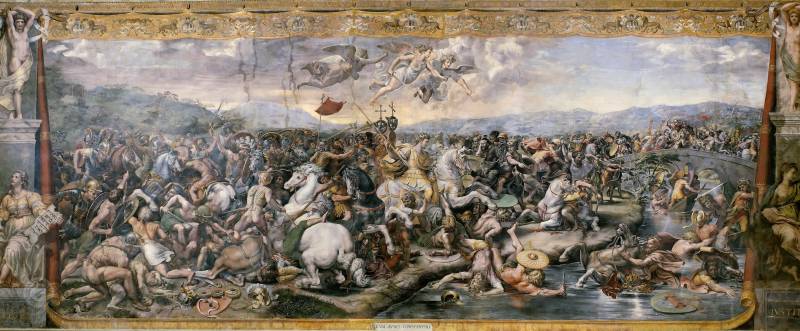
"The Battle of the Mulvian Bridge". Artwork by Giulio Romano, design by Rafael Santi
Few of the rulers managed to exert such a powerful influence on the course of the world stories, as the hero of our article today - Flavius Valerius Aurelius Constantine. Secular historians called him the Great, the Christian Church declared him equal to the apostles (it is curious that the Catholic Church did this later than everyone else - in 1596 after the signing of the Union of Brest).
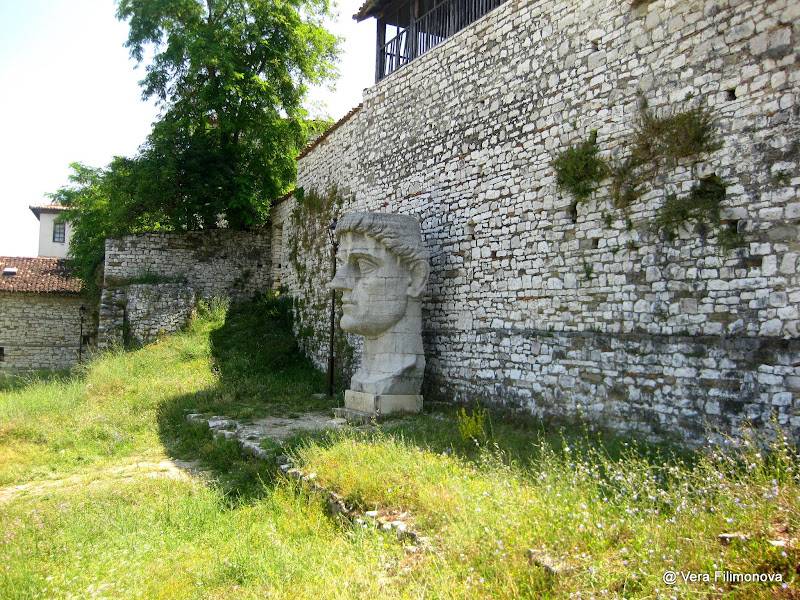
Bust of Constantine the Great in the city of Berat, Albania
However, not everyone knows that until the end of his life, this emperor remained a pagan and only before his death was baptized by the Nicomedia bishop Eusebius. And this Eusebius was no more, no less - a friend of Arius and the head of the Arians, who were then even called Eusebians.
Thus, it can be said that the Equal-to-the-Apostles Emperor was a pagan (and his life can by no means be called moral) and died a heretic, which does not at all interfere with his veneration by the official church.
The origin and youth of the future emperor
Konstantin was born on the territory of present-day Serbia - in the city of Naisse (Nish), which was part of the Roman province of Upper Moesia. It happened on February 27, but they argue about the year of birth, they consider it the most likely - 272. Constantine's father was a member of the noble patrician family Flavius Valery Constantius Chlorus, and his mother, Elena, was a commoner from Bithynia, the daughter of a roadside tavern owner. However, some believe that her father was the owner of the so-called mancio - a hotel for officials of the empire. This is a higher social status. It was at this inn that Constantius Chlorine met Elena, who later, like her son, would be revered as a saint and equal to the apostles.
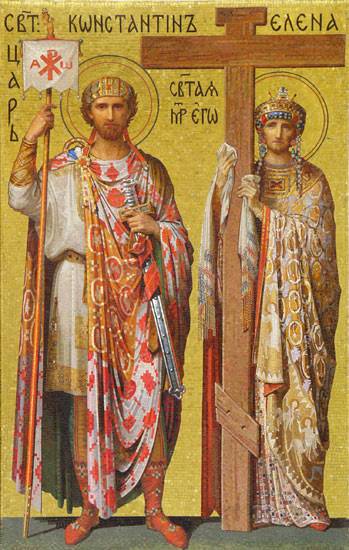
Equal-to-the-Apostles Constantine and Helena, mosaic of St. Isaac's Cathedral, St. Petersburg. In the right hand of Konstantin is a labarum, Elena holds the “True (Life-giving) Cross” she found
This woman was born in the village of Drepana (Drepanum), located near the future Constantinople. Later, Drepana became a city, which was named Helenopolis in her honor (identified with the city of Hersek in the Turkish province of Yalova).
As you probably guessed, Elena was not the wife of Constantius, but a concubine - a concubine. So Constantine the Great was also illegitimate.
In 97, Mark Cocceus Nerva reformed the system of government: the “senior” emperor, August, began to choose his co-ruler and heir, who received the title of Caesar. In 285, Diocletian developed this idea, effectively dividing the empire in two. Now the power was ruled by two Augusts (eastern and western), each of which appointed a co-ruler - Caesar. After 20 years of reign, Augustus had to yield his post to Caesar and retire.
For himself, Diocletian chose the rich and promising east, and gave the west, with Rome losing its significance, to the August appointed by him - Maximian Herculius. In 293, Gaius Valerius Galerius Maximilian became Caesar of Diocletian, who claimed that his mother gave birth to him "after intercourse with a dragon" (or serpent) - like Olympias, the mother of Alexander the Great. He is considered the founder of the city of Budapest. Diocletian, by tradition, adopted Galerius and married him to his daughter.
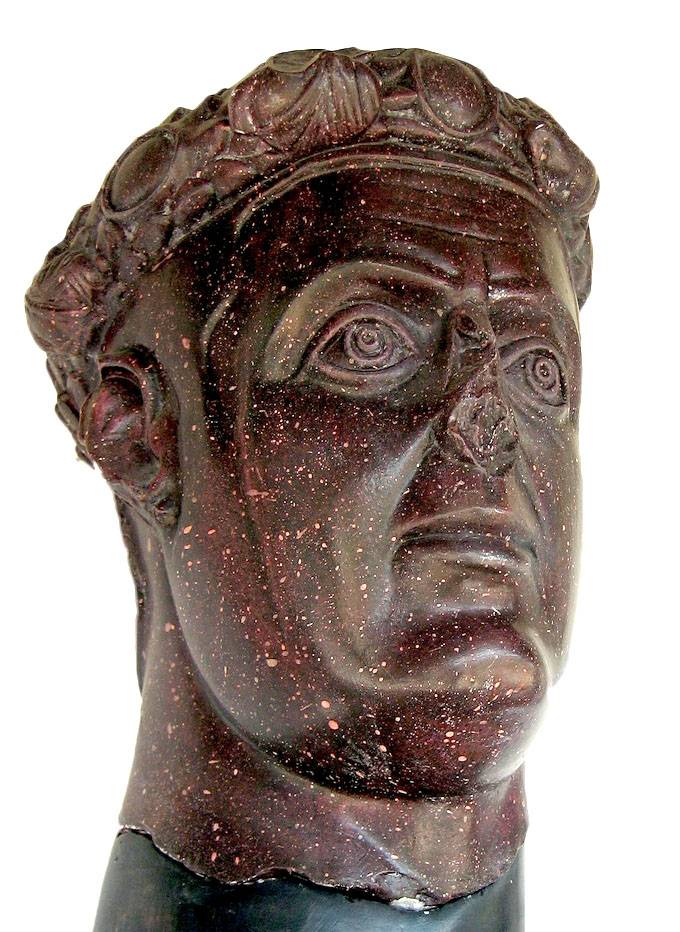
Sculpture of the head of Galerius, porphyry
And Maximian in the same year made Constantius Chlorus his junior co-ruler, also adopting him and marrying his stepdaughter Theodora.
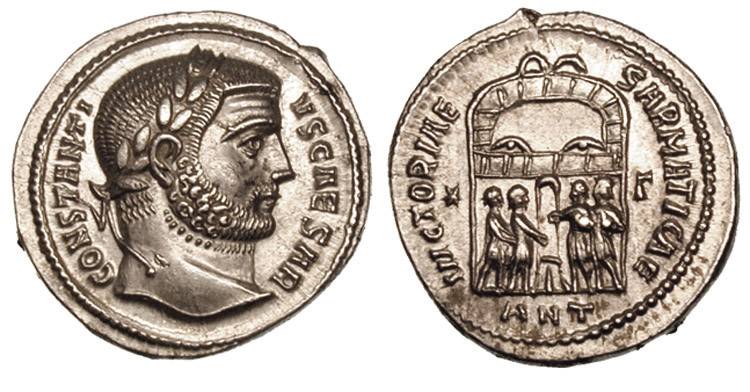
Silver coin depicting Constantius Chlorus
Theodora had 6 children in this marriage - three sons and three daughters.
After the marriage of Constantius, information about Helen disappears from historical sources and reappears only after her son became emperor. It was then, having already converted to Christianity (at the age of more than 60 years), she led the excavations in Jerusalem. The result was the "acquisition" of the Holy Sepulcher, the Life-Giving Cross and some other relics.
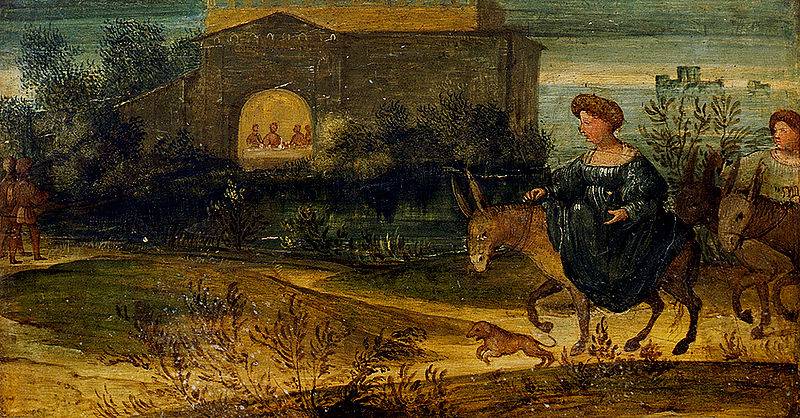
Altobelo Melone. Journey of Saint Helena to Jerusalem
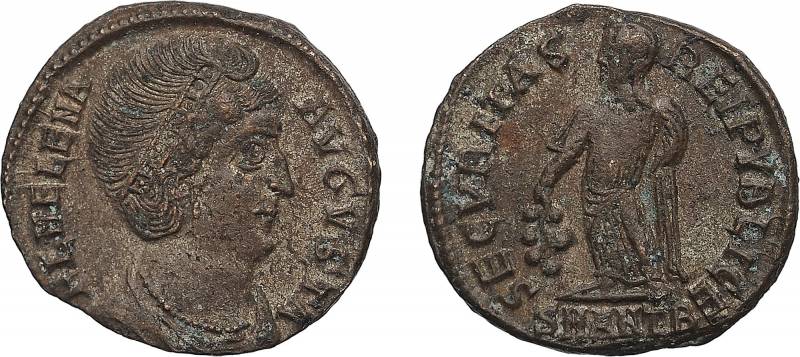
Helena on a coin minted in Antioch in 325-329, on the back - Securitas, goddess of security and stability
But back to her son Konstantin.
In 293, he ended up in the eastern provinces of the empire, where Diocletian ruled. In 297, a war began with the power of the Sassanids, in which the army of Caesar Galerius was first defeated at Carr - in the same place where Mark Crassus had once suffered a catastrophic defeat. However, in the future, the experienced commander Galerius acted successfully and occupied the Persian capital of Ctesiphon. Constantine was in the army of this Caesar.
Some authors write about the hostility that Galerius felt for Constantine. In The Origin of the Emperor Constantine, it is stated that in the battle with the Sarmatians, this Caesar put him on the most dangerous site. And Lactantius and Praxagoras report that once Galerius, as if in jest, pushed Constantine into a cage with wild animals.
Then Constantine was with Diocletian: he accompanied him on a trip to Egypt in 301, to Palestine in 302, to Rome in 303.
In the east, Constantine married Minervina for the first time, but this woman is sometimes called not a wife, but a concubine (cohabitant) - like the mother of Constantine himself. Minervina gave birth to a son, Crispus, who later became the governor of Gaul, where he successfully repelled the attacks of barbarian tribes and commanded fleet during his father's war with Licinius.
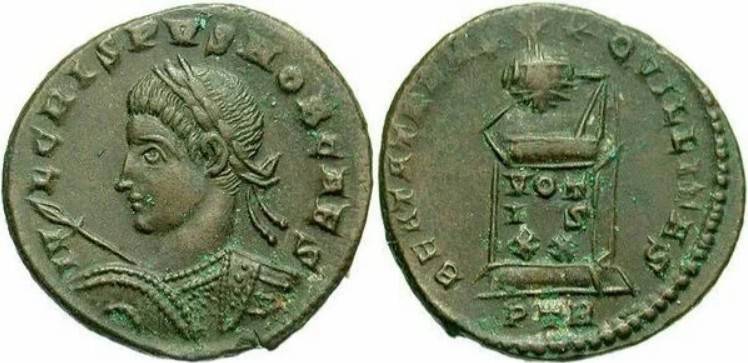
Coin depicting Crispus
The way to power
In 305, Diocletian and Maximian transferred power to their co-rulers - Galerius and Constantius Chlorus. The legitimate sons of the seriously ill Constantius were still minors, and Constantine was in Nicomedia at the court of Galerius - practically in the position of a hostage. Knowing about the expected imminent death of Augustus West, Galerius wanted to put Flavius Severus in his place. Nevertheless, he was forced to release Konstantin, but ordered to intercept him on the road.
However, Constantine managed to get to Gaul, where his father was at that time. Together they still managed to campaign against the British Picts. In 306, after the death of Constantius Chlorus, the soldiers of the legions near the city of Eyuorak (modern York) proclaimed Constantine emperor.
But Galerius, referring to the young age of Constantine, appointed the aforementioned Flavius Severus as August. Constantine received the title of Caesar and "son of August". Galerius' nephew Maximinus Daza (his junior co-ruler), who hoped to become the emperor of the West, also became the "son of August". It is curious that even then Constantine pursued a soft policy towards Christians, and Maximinus Daza, on the contrary, even intensified repressions in his possessions.
In the same year 306, Maxentius, the son of the abdicated August Maximian, seized power in Rome, who then tried to return to power and called on Diocletian to do the same. However, he prudently refused, and it was, of course, not a love of gardening, but a sober analysis of the balance of power: there was no chance of winning.
Flavius Severus laid siege to Rome, but, unable to take this city, he first retreated to Ravenna, and then surrendered to Maximian, who forced him to commit suicide. In 307, Galerius came to Italy, but could not capture the main strongholds - Rome and Ravenna. In 308, he appointed Licinius the Augustus of the West, but in Italy, as we remember, Maxentius still held on, Gaul and Britain were controlled by Constantine.
Maximian, not wanting to share power with his son, moved to Arelat (Arles). He entered into an alliance with Constantine, married his daughter Fausta to him and recognized him as Augustus. In 310, having spread rumors about the death of Constantine, Maximian declared himself emperor.
However, the army was loyal to Constantine, and Maximian fled to Massilia (Marseille), whose inhabitants refused to defend him. Maximian was sentenced to death, but, as a mercy, they offered to commit suicide - the former emperor hanged himself.
The name of Maximian was erased from all inscriptions, his images were destroyed. The widow of Maximian was forced to swear that her son Maxentius was born from a relationship with a Syrian lover. Now do you understand why Diocletian refused to fight for power, citing a good cabbage crop?
In 312, Constantine opposed Maxentius. Having won several victories, he approached Rome. Here, at the Milvian Bridge, the decisive battle took place.
According to legend, on the eve of Constantine saw a cross in the sky and heard a voice saying "Sim conquer" (Hocvince).
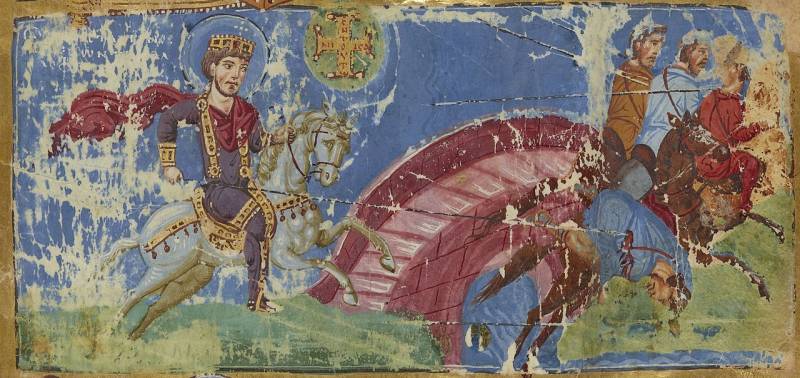
Vision of Constantine I and the Battle of the Milvian Bridge. Miniature from the manuscript of the Homilia of Gregory the Theologian
After that, he ordered to make the so-called labarum - the imperial standard, which was later destroyed by order of Julian the Apostate.
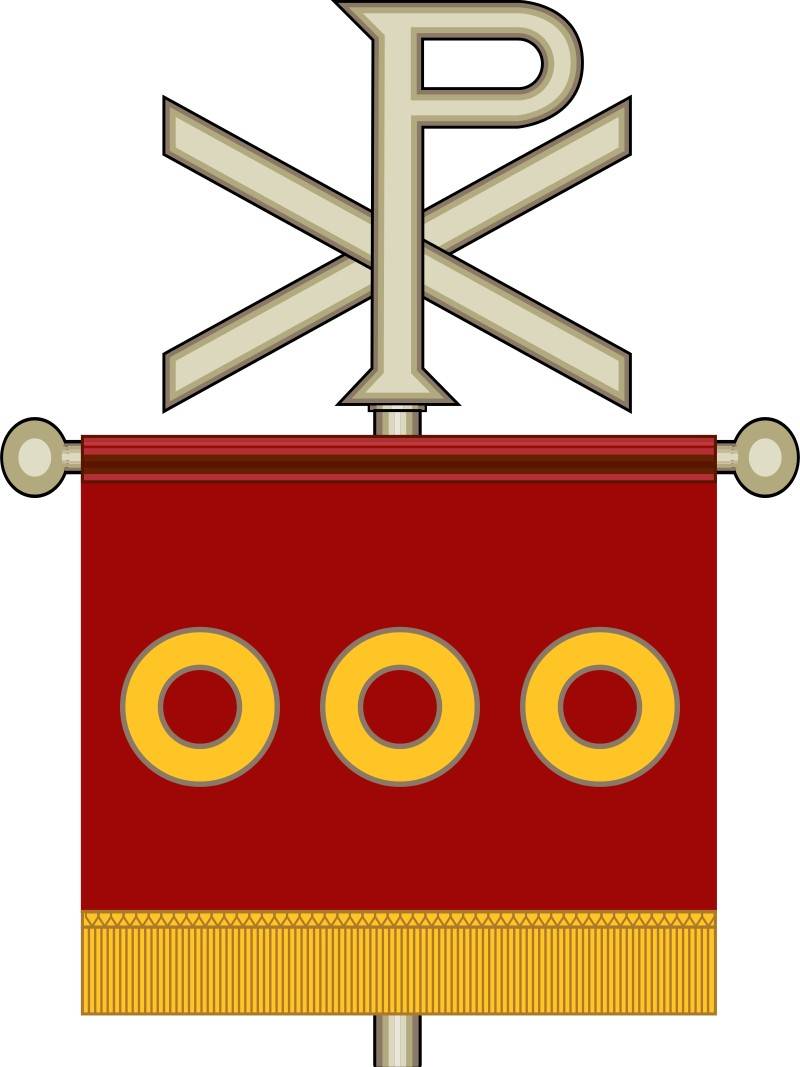
Depiction of Constantine's labarum
In the battle that began, the troops of Maxentius were overturned and fled, the enemy of Constantine drowned in the Tiber.
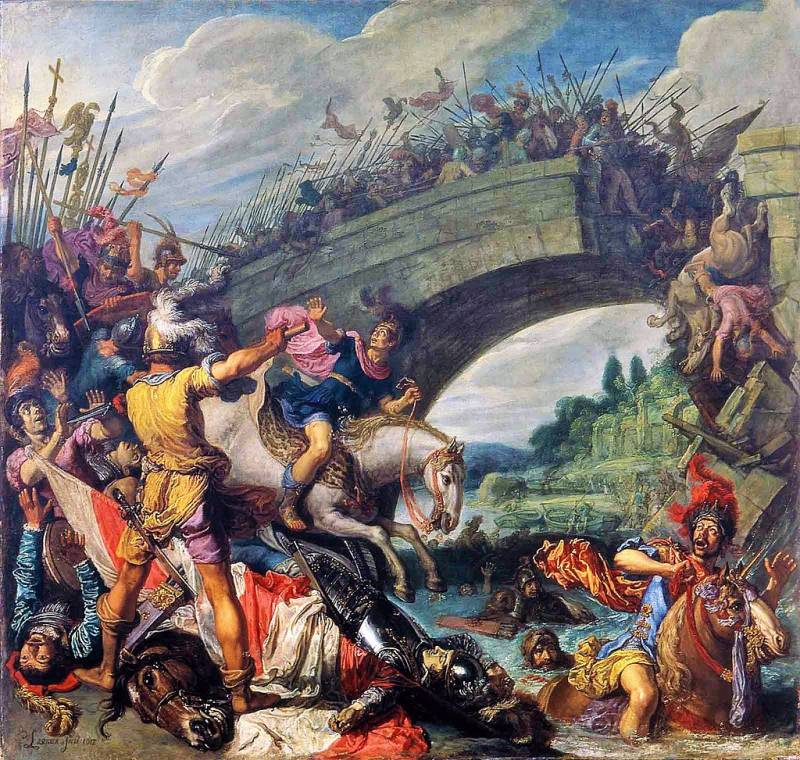
Peter Lastmann. Battle of the Milvian Bridge
His body was found and beheaded, two sons were executed. On October 28, 312, the new lord solemnly entered Rome, the arch of Constantine became a monument to this victory.
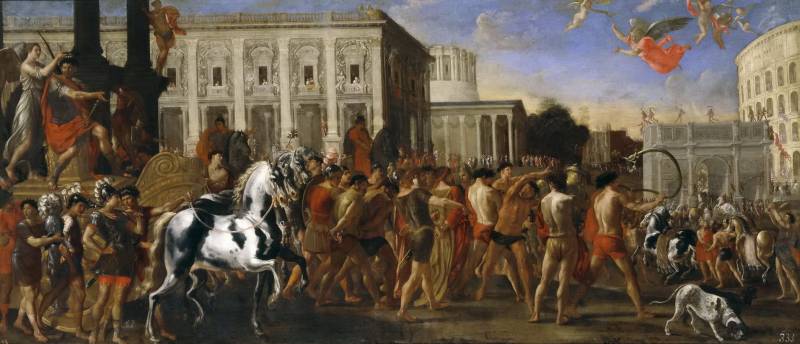
Viviano Codazzi and Domenico Gargiulo. Triumphant Entry of Constantine into Rome, Prado Museum, Madrid
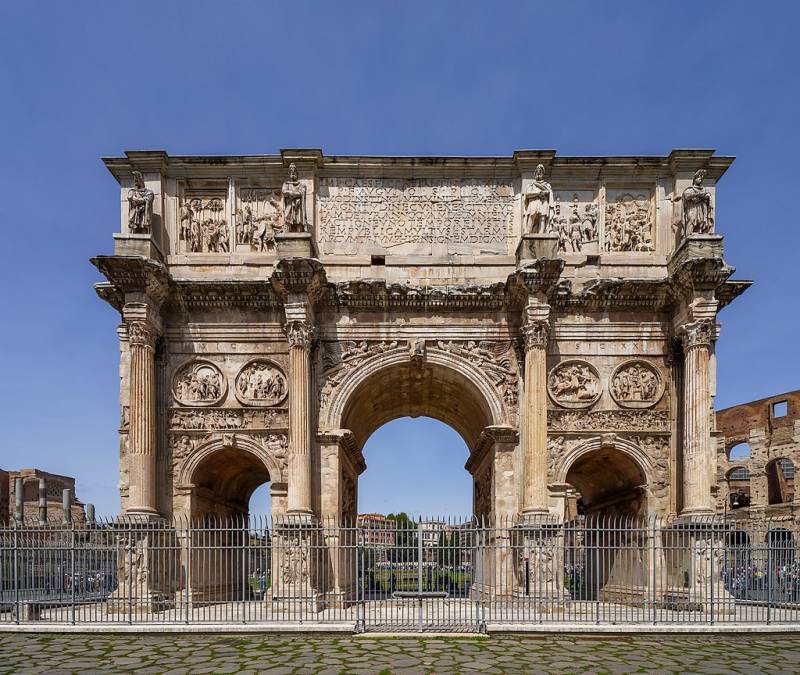
Arch of Constantine, Rome
Galerius died in 311, but, besides Constantine, there were still two Augusts in the empire: Maximinus Daza and Licinius, who was married to Constantine's sister. In February 313, Constantine and Licinius met in Milan, where they announced freedom of worship for Christians throughout the empire and the return of confiscated property to them. This joint statement of theirs was called the Edict of Milan, although no official document was issued.
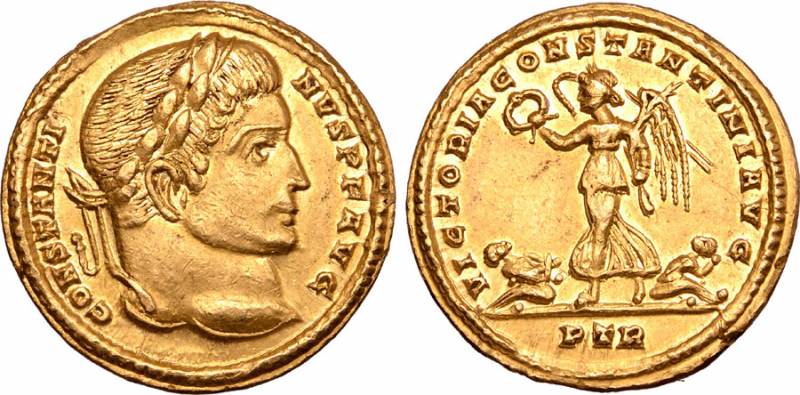
Augustus Constantine on a solidus minted in 313–315.
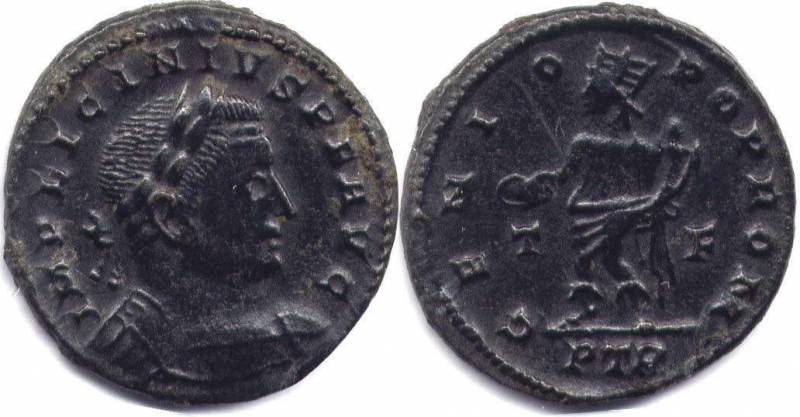
Flavius Galerius Valerius Licinian Licinius on a coin minted in 310–313.
But even earlier, Galerius announced freedom of religion in the Roman Empire on April 30, 311. However, this edict was not recognized then by Licinius and Maximinus Daza. Now Licinius even became the chairman of the court over the ruler of Antioch, Theoteknos, who was accused of mass executions of supporters of the new faith.
But in the future, Licinius removed all Christians from himself, banned the councils of bishops and canceled the release of priests from curial duties. And in 323, he ordered Christians to participate in a pagan rite dedicated to the 15th anniversary of his reign.
This later gave Constantine a reason to declare himself the protector of Christians. However, he himself fought against the followers of the African bishop Majorian, declared heretics, who would later be called donates. In 316, Constantine issued a decree depriving them of places for meetings and worship, then serious persecution began, and only in 321, on the eve of the war with Licinius, the persecution was stopped.
Let's go back a little.
In 313, Maximinus Daza "dropped out of the game": after being defeated by Licinius in the Battle of the Pure Fields (Faction), he fled to Tarsus, where he fell ill and died at the age of 43. Now the Asian provinces, the Balkans and Egypt were in the power of Licinius. Constantine relied on Italy, Spain, Gaul and Africa. And he had to be alone.
In 314, the armies of Licinius and Constantine met at Cybalus. Constantine became the winner in this battle, Licinius was forced to cede Pannonia, Dalmatia, Dacia, Macedonia and Greece to him.
After 10 years, the last rival of Constantine suffered a final defeat - first in the battle of Adrianople, and then in a naval battle near the Hellespont (Constantine's eldest son Crispus commanded the fleet) and in a land battle at Chrysopolis. Renouncing power in exchange for a promise to spare his life, Licinius settled in Thessalonica. In 325 he was killed. According to Jordanes, he was killed by the rebellious Goths, but Eutropius and Aurelius Victor claim that Licinius was strangled on the orders of Constantine.
Interestingly, in Rome, after the victory over Licinius, Constantine was received very coldly. Disgruntled citizens even smashed the head of his statue. Konstantin, who learned about this, ran his hand over his head and said:
Relations with Gentiles, Jews and Christians
In 325, Constantine took part in the Council of Nicaea, at which the Creed was adopted. In order for the pagan emperor to have the legal right to attend meetings, he was elevated to the rank of deacon. The Melitians, whose communities were later also called the "Church of the Martyrs", retained their bishops (but they did not have the right to govern their provinces). But Arius was convicted and exiled to Illyria.
I must say that Constantine strove for reconciliation within the church - he had enough of the confrontation between Christians and pagans. And so the fanatical Orthodox Bishop of Alexandria Athanasius was exiled to Trier. And in 336, Constantine wished to meet with Arius. After this visit, the heresiarch experienced "extreme relaxation of the stomach", which became the cause of his death.
Some said that Arius was poisoned on the orders of Constantine, but a banal infection could also be the cause. Indeed, in 337, as we remember, the dying Constantine was baptized by a friend and supporter of Arius, Bishop Eusebius of Nicomedia, who in 336 delivered a panegyric on the 30th anniversary of the emperor’s reign and who supplied the new churches of Constantinople with liturgical books.
Synagogue stewards were, like Christian priests, exempt from community service, but Jews had the right to visit Jerusalem only one day a year and could not have Christian slaves. A temple was built in Jerusalem in honor of the Resurrection of Christ.
Treasures and statues began to be seized from pagan temples, the best of which were used to decorate the new capital. Many cult items were melted down into gold, silver and bronze coins.
Temples where ritual prostitution was practiced were closed, while divination and sacrifice were forbidden in others. Christians under Constantine gained wide access to public office.
Sole ruler of the empire
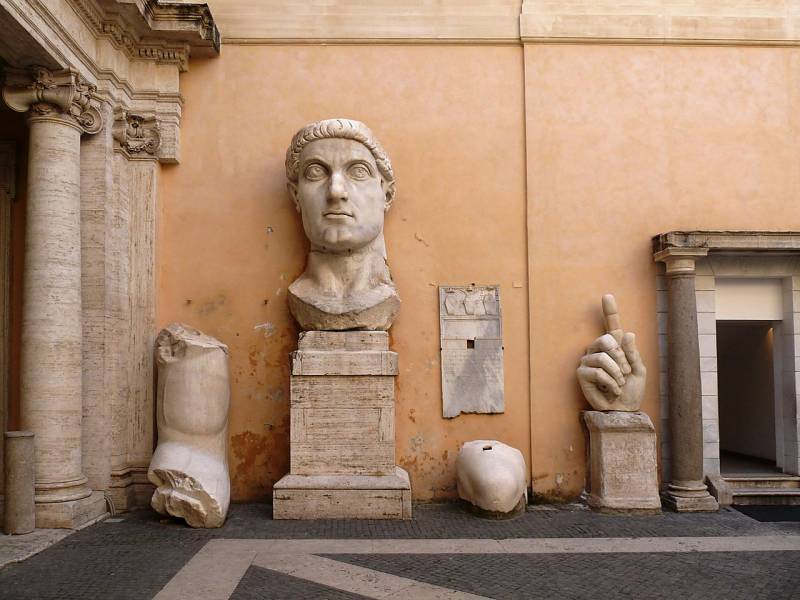
Fragments of the statue of Constantine the Great, Capitolini museum in Rome (the height of this statue reached 12 meters)
Having come to sole power, Constantine decided to establish a new capital of his empire. On the European coast of the Hellespont, the ancient Greek city of Byzantium was practically demolished, and in November 324, after the consecration of the land, the emperor with a spear in his hand went around the circumference of the future Constantinople - this is a completely pagan rite.
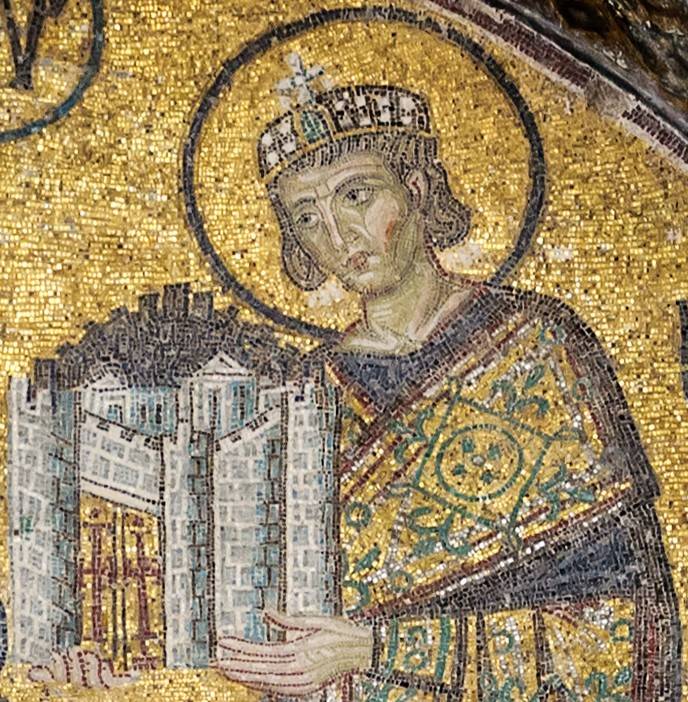
Constantine the Great brings the city as a gift to the Mother of God. Mosaic above the entrance to the Hagia Sophia. In fact, Constantine remained a pagan until his death, and therefore, naturally, the Mother of God did not give his city
At the beginning of the summer of 326, Constantine's eldest son Flavius Julius Crispus, who was considered his heir, and his nephew Licinian were unexpectedly executed. The murder of Crispus angered the emperor's mother, Helen, who loved her grandson very much.
Most researchers believe that Crispus and Licinian were killed by their intrigues, the second wife of the emperor, Fausta. But the Byzantine historian Zosimus considered Crispus's love affair with his stepmother to be the cause of anger. A month later, Constantine repented of his decision and ordered Fausta to be killed: she suffocated, being locked in a hot bath.
They say that Constantine made the decision to be baptized before his death precisely because the pagan priests refused to forgive him the sin of filicide, and the Christian hierarchs turned out to be more lenient.
In addition to the construction of a new capital, it is worth noting the construction in Dacia (in Sucidava) of the “Konstantinov Bridge” across the Danube, which was opened personally by the emperor in July 328. It became the longest river bridge of that time: the total length was 2 meters, 437 of which passed above the water, the width was 1 meters, and the height above the river level was 137 meters.
In 332, the son of the emperor, also Constantine, in alliance with the Sarmatians successfully fought against the Visigoths, led by Ariarich.
In 334, the Limigant tribe rebelled against the Sarmatians, who were then allies of Rome. With the help of the Romans, they were defeated, and part of the Sarmatians then settled as columns on the territory of the empire - in Italy, Macedonia and Thrace. Young male Sarmatians joined the ranks of the Roman army.
In the spring of 336, Constantine's troops crossed the Danube and defeated the Goths in Dacia. After that, on the coins, Constantine began to be called "the winner of all peoples", another one was added to his titles - "The Greatest Dacian" (Dacicus maximus).
Baptism and death of Emperor Constantine
In 338, the Nisibis Peace Treaty with Persia ended. As a diplomatic justification for a new war, Constantine traditionally decided to appeal to the oppressed position of the Christians - now Persia. Shahinshah Shapur II was sent a letter demanding to stop the oppression of Christians subject to him, the army began to prepare for a new campaign - now to the east.
However, Constantine's plans were not destined to come true. In the spring of 337, the emperor fell ill, and attempts at treatment were unsuccessful. In his mother's hometown, Drepan, already renamed Helenopolis, he confessed to the local priests and was declared ready for baptism. But Constantine decided to be baptized in Nicomedia. The rite of baptism, as we remember, was conducted by the local bishop Eusebius.
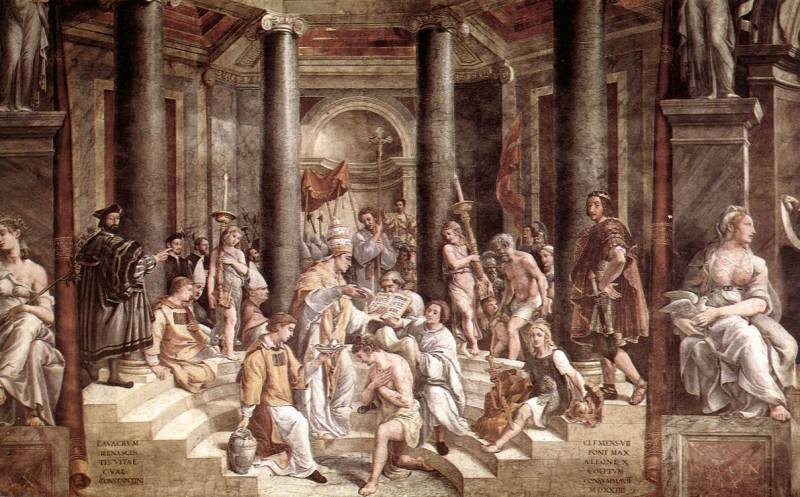
"The Baptism of Constantine". Fresco made in the workshop of Raphael
Shortly thereafter, on May 22, 337, the emperor died. His body was taken to Constantinople, where, according to the will, it was buried in the Church of the Holy Apostles.
In predominantly pagan Rome, the Senate, according to ancient tradition, declared Constantine I "Divine" - the last in the history of this empire.
It is curious that the Saint was also declared the daughter of Constantine - Constanta. She was the wife of his two nephews - Hanniabalian the Younger and Constantius Gallus (brother of Julian the Apostate) and was by no means famous for either sympathy for Christians or a holy life. However, in the XIII century, a church was built in her mausoleum, and the Romans, who had forgotten their history, decided that this was the tomb of some kind of saint - the temple was called that: Santa Costanza.
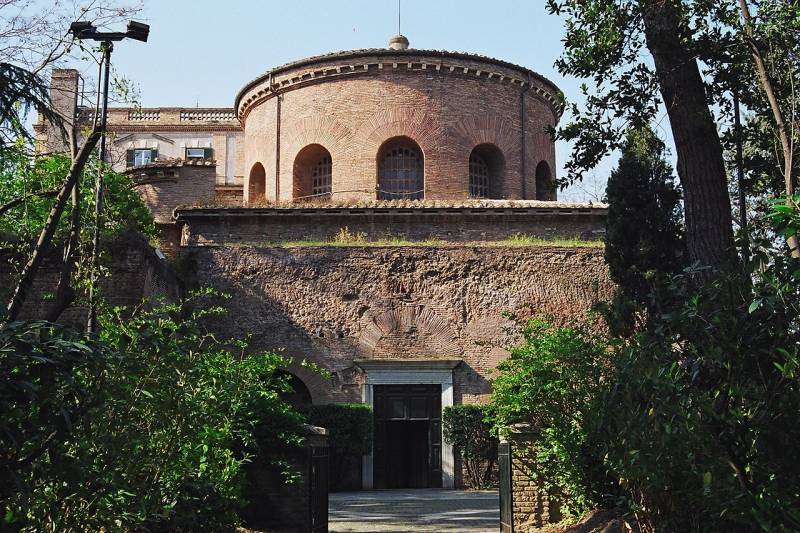
Sad End of Constantine's Dynasty
Before his death, Constantine divided the empire into 4 parts between his sons and nephews, which caused displeasure among his direct descendants.
As a result, the so-called "massacre of 337" took place in Constantinople, during which two brothers of Constantine the Great (Julius Constantius and Dalmatius the Elder) and six of his nephews were killed. The empire was divided between the sons of Constantine the Great - Constantius, Constans and Constantine, who soon also entered into a struggle among themselves.
In the end, of all the male relatives of Constantine, only his son Constantius II and his nephew Flavius Claudius Julian survived, who went down in history as Emperor Julian the Apostate.
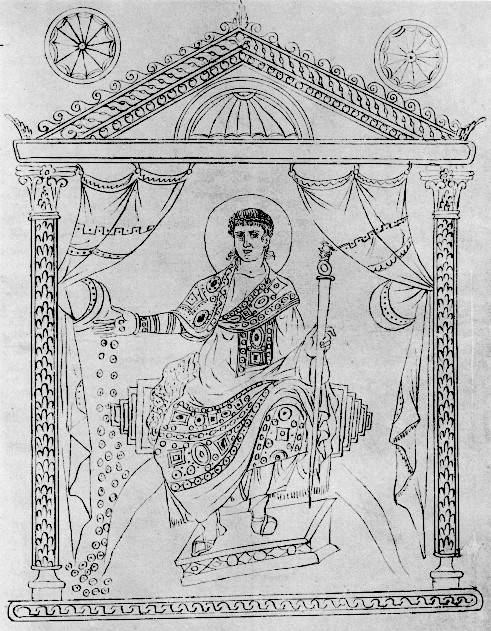
Constantius II, depiction of the Chronograph of 354
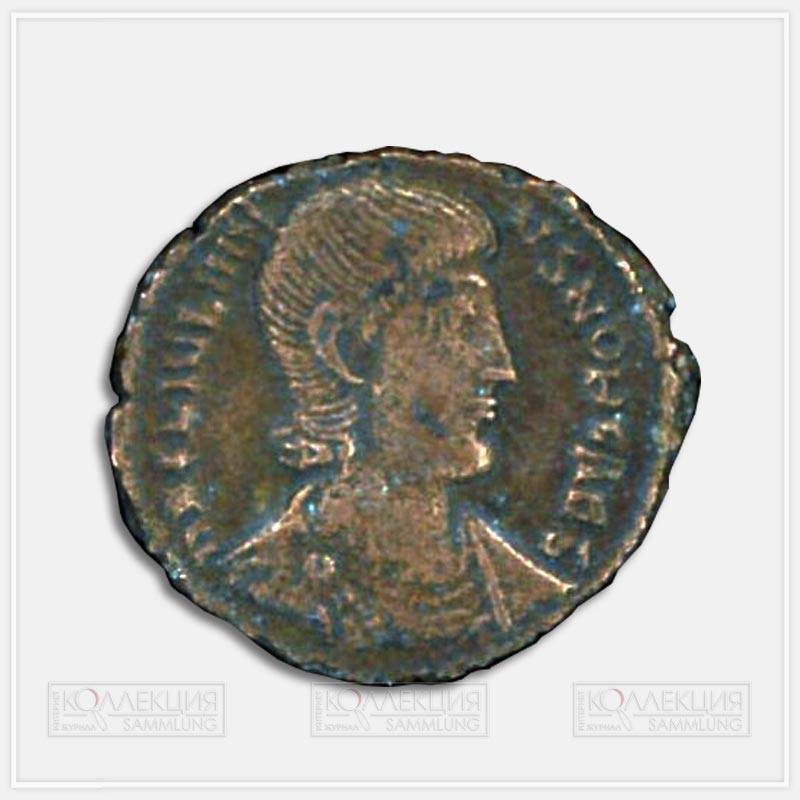
Coin of Caesar Julian
Only the sudden death of Constantius saved the empire from the war between them. Julian died during a campaign against Persia - July 26, 363, and another dynasty came to power in the Roman Empire.
Information